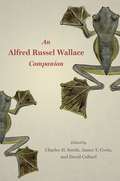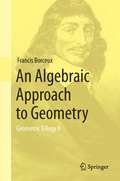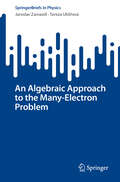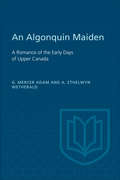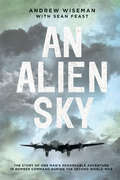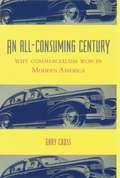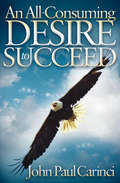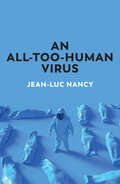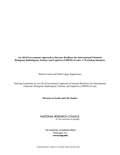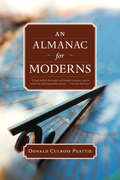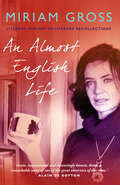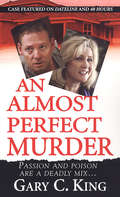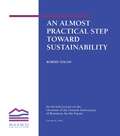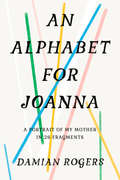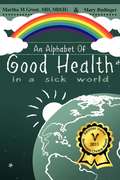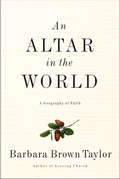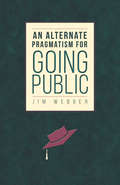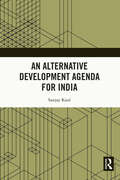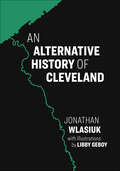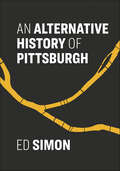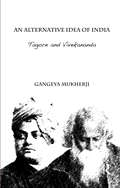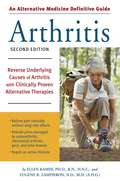- Table View
- List View
An Alfred Russel Wallace Companion
by Charles H. SmithAlthough Alfred Russel Wallace (1823–1913) was one of the most famous scientists in the world at the time of his death at the age of ninety, today he is known to many as a kind of “almost-Darwin,” a secondary figure relegated to the footnotes of Darwin’s prodigious insights. But this diminution could hardly be less justified. Research into the life of this brilliant naturalist and social critic continues to produce new insights into his significance to history and his role in helping to shape modern thought. Wallace declared his eight years of exploration in southeast Asia to be “the central and controlling incident” of his life. As 2019 marks one hundred and fifty years since the publication of The Malay Archipelago, Wallace’s canonical work chronicling his epic voyage, this collaborative book gathers an interdisciplinary array of writers to celebrate Wallace’s remarkable life and diverse scholarly accomplishments. Wallace left school at the age of fourteen and was largely self-taught, a voracious curiosity and appetite for learning sustaining him throughout his long life. After years as a surveyor and builder, in 1848 he left Britain to become a professional natural history collector in the Amazon, where he spent four years. Then, in 1854, he departed for the Malay Archipelago. It was on this voyage that he constructed a theory of natural selection similar to the one Charles Darwin was developing, and the two copublished papers on the subject in 1858, some sixteen months before the release of Darwin’s On the Origin of Species. But as the contributors to the Companion show, this much-discussed parallel evolution in thought was only one epoch in an extraordinary intellectual life. When Wallace returned to Britain in 1862, he commenced a career of writing on a huge range of subjects extending from evolutionary studies and biogeography to spiritualism and socialism. An Alfred Russel Wallace Companion provides something of a necessary reexamination of the full breadth of Wallace’s thought—an attempt to describe not only the history and present state of our understanding of his work, but also its implications for the future.
An Algebraic Approach to Geometry: Geometric Trilogy II
by Francis BorceuxThis is a unified treatment of the various algebraic approaches to geometric spaces. The study of algebraic curves in the complex projective plane is the natural link between linear geometry at an undergraduate level and algebraic geometry at a graduate level, and it is also an important topic in geometric applications, such as cryptography. 380 years ago, the work of Fermat and Descartes led us to study geometric problems using coordinates and equations. Today, this is the most popular way of handling geometrical problems. Linear algebra provides an efficient tool for studying all the first degree (lines, planes) and second degree (ellipses, hyperboloids) geometric figures, in the affine, the Euclidean, the Hermitian and the projective contexts. But recent applications of mathematics, like cryptography, need these notions not only in real or complex cases, but also in more general settings, like in spaces constructed on finite fields. And of course, why not also turn our attention to geometric figures of higher degrees? Besides all the linear aspects of geometry in their most general setting, this book also describes useful algebraic tools for studying curves of arbitrary degree and investigates results as advanced as the Bezout theorem, the Cramer paradox, topological group of a cubic, rational curves etc. Hence the book is of interest for all those who have to teach or study linear geometry: affine, Euclidean, Hermitian, projective; it is also of great interest to those who do not want to restrict themselves to the undergraduate level of geometric figures of degree one or two.
An Algebraic Approach to the Many-Electron Problem (SpringerBriefs in Physics)
by Jaroslav Zamastil Tereza UhlířováThis book presents an algebraic approach to the coupled cluster method for many-electron systems, pioneered by Josef Paldus. Using field methods along with an algebraic, rather than diagrammatic, approach facilitates a way of deriving the coupled cluster method which is readily understandable at the graduate level. The book begins with the notion of the quantized electron field and shows how the N-electron Hamiltonian can be expressed in its language. This is followed by introduction of the Fermi vacuum and derivation of the Hartree-Fock equations along with conditions for stability of their solutions. Following this groundwork, the book discusses a method of configuration interaction to account for dynamical correlations between electrons, pointing out the size-extensivity problem, and showing how this problem is solved with the coupled cluster approach. This is followed by derivation of the coupled cluster equations in spin-orbital form. Finally, the book explores practical aspects, showing how one may take advantage of permutational and spin symmetries, and how to solve coupled-cluster equations, illustrated by the Hubbard model of benzene, the simplest quasi-realistic model of electron correlation.
An Algebraic Introduction to K-Theory
by Bruce A. MagurnThis is an introduction to algebraic K-theory with no prerequisite beyond a first semester of algebra (including Galois theory and modules over a principal ideal domain). The presentation is almost entirely self-contained, and is divided into short sections with exercises to reinforce the ideas and suggest further lines of inquiry. No experience with analysis, geometry, number theory or topology is assumed. Within the context of linear algebra, K-theory organises and clarifies the relations among ideal class groups, group representations, quadratic forms, dimensions of a ring, determinants, quadratic reciprocity and Brauer groups of fields. By including introductions to standard algebra topics (tensor products, localisation, Jacobson radical, chain conditions, Dedekind domains, semi-simple rings, exterior algebras), the author makes algebraic K-theory accessible to first-year graduate students and other mathematically sophisticated readers. Even if your algebra is rusty, you can read this book; the necessary background is here, with proofs.
An Algonquin Maiden: A Romance of the Early Days of Upper Canada
by G. Mercer Adam A. Ethelwyn WetheraldShort excerpt: Man versus nature-the successive assaults of perishing humanity upon the almost impregnable fortresses of the eternal forests-this was the struggle of Canadian civilization, and its hard-won triumphs were bodied forth in the scattered roofs of these cheap habitations.
An Alien Sky: The Story of One Man's Remarkable Adventure in Bomber Command During the Second World War
by Sean Feast Andy WisemanThe legendary RAF bomber who survived the infamous Stalag 3 POW camp recounts his WWII experiences in this military memoir. Growing up in Berlin just as Adolf Hitler was coming to power, Andrew Wiseman escaped to Poland with is family when he was thirteen. He later made his way to England where he joined the Royal Air Force, training first as a pilot and then as an air bomber in South Africa. Joining No. 466 squadron, he flew Handley Page Halifax heavy bombers in a handful of operations before being shot down in Occupied France. Wiseman spent the next year as a prisoner of war in Nazi prison camp Stalag Luft III, where he used his knowledge of Russian, Polish and German to act as a camp interpreter. Taking part in the prison break known as the Great Escape, Wiseman acted as a scrounger for the X committee who dug the tunnel. Moved from camp to camp, he was one of those forced into the Long March when the Germans attempting to escape the Russian advance. He later played a key role in avoiding bloodshed when the Russians refused to allow British and Norwegian prisoners to return home—a role for which he was later recognized by the King of Norway. Co-written with the acclaimed aviation historian Sean Feast, Andrew Wiseman&’s wartime memoir is a vivid chronicle of courage, service and survival through the Second World War.
An All-Consuming Century: Why Commercialism Won in Modern America
by Gary CrossThe unqualified victory of consumerism in America was not a foregone conclusion. The United States has traditionally been the home of the most aggressive and often thoughtful criticism of consumption, including Puritanism, Prohibition, the simplicity movement, the '60s hippies, and the consumer rights movement. But at the dawn of the twenty-first century, not only has American consumerism triumphed, there isn't even an "ism" left to challenge it. An All-Consuming Century is a rich history of how market goods came to dominate American life over that remarkable hundred years between 1900 and 2000 and why for the first time in history there are no practical limits to consumerism.By 1930 a distinct consumer society had emerged in the United States in which the taste, speed, control, and comfort of goods offered new meanings of freedom, thus laying the groundwork for a full-scale ideology of consumer's democracy after World War II. <P><P>From the introduction of Henry Ford's Model T ("so low in price that no man making a good salary will be unable to own one") and the innovations in selling that arrived with the department store (window displays, self service, the installment plan) to the development of new arenas for spending (amusement parks, penny arcades, baseball parks, and dance halls), Americans embraced the new culture of commercialism—with reservations. However, Gary Cross shows that even the Depression, the counterculture of the 1960s, and the inflation of the 1970s made Americans more materialistic, opening new channels of desire and offering opportunities for more innovative and aggressive marketing. The conservative upsurge of the 1980s and '90s indulged in its own brand of self-aggrandizement by promoting unrestricted markets. The consumerism of today, thriving and largely unchecked, no longer brings families and communities together; instead, it increasingly divides and isolates Americans.Consumer culture has provided affluent societies with peaceful alternatives to tribalism and class war, Cross writes, and it has fueled extraordinary economic growth. The challenge for the future is to find ways to revive the still valid portion of the culture of constraint and control the overpowering success of the all-consuming twentieth century.
An All-Consuming Desire to Succeed
by John Paul CarinciAn inspirational self-help book for those seeking personal fulfillment and professional success from the author of The Power of Being Different. We are all searching for a better life, more inspiration, and a way to be more productive and fulfilled—without the constant competition in our personal lives and workplaces wearing us down. With An All-Consuming Desire to Succeed, you can learn to stand out from the crowd by discovering: how to maintain a competitive edge through positive affirmations; how to control negative influences; the secrets of the highly successful; how to plan out and achieve newfound goals; and lessons on how to motivate yourself to stay true to your unique vision. &“In the spirit of such inspirational authors as Norman Vincent Peale, Napoleon Hill, and W. Clement Stone, John Paul Carinci has written a classic self-help book centered around achieving success . . . Any reader seeking a healthy dose of positive motivation to achieve the loftiest goals or even to meet the daily challenges of life is sure to find much of value in John Paul Carinci&’s inspirational work.&” —Foreword Reviews
An All-Too-Human Virus
by Jean-Luc NancyIn the past, pandemics were considered divine punishment, but we now understand the biological characteristics of viruses and we know they are spread through social interaction. What used to be divine has become human – all too human, as Nietzsche would say. But while the virus dispels the divine, we are discovering that living beings are more complex and harder to define than we had previously imagined, and also that political power is more complex than we may have thought. And this, argues Nancy, helps us to see why the term ‘biopolitics’ fails to grasp the conditions in which we now find ourselves. Life and politics challenge us together. Our scientific knowledge tells us that we are dependent only on our own technical power, but can we rely on technologies when knowledge itself includes uncertainties? If this is the case for technical power, it is much more so for political power, even when it presents itself as guided by objective data. The virus is a magnifying glass that reveals the contradictions, limitations and frailties of the human condition, calling into question as never before our stubborn belief in progress and our hubristic sense of our own indestructibility as a species.
An All-of-Government Approach to Increase Resilience for International Chemical, Biological, Radiological, Nuclear, and Explosive (CBRNE) Events
by Sherrie ForrestChemical, Biological, Radiological, Nuclear, and high-yield Explosive (CBRNE) events have the potential to destabilize governments, create conditions that exacerbate violence or promote terrorism. This can trigger global repercussions. These events can quickly overwhelm the infrastructure and capability of the responders, especially in countries that do not have the specialized resources for response like those available in the United States. When a CBRNE incident occurs in a partner nation or other foreign country, the U. S. is often called upon to provide assistance. Interoperability - the ability to work together - among U. S. agencies, foreign governments, and responders involved in the effort is key to an efficient response. The effectiveness of the U. S. response and approach to CBRNE events in partner nations depends on the capability of the U. S. government to provide timely and appropriate assistance and the resilience of the partner nation to a CBRNE event. "An All-of-Government Approach to Increase Resilience for International Chemical, Biological, Radiological, Nuclear, and Explosive (CBRNE) Events" is the summary of a workshop convened in June 2013 by the National Institute of Standards and Technology and the National Research Council to discuss ways to strengthen the U. S. ability to prepare for and respond to CBRNE events that occur in U. S. partner nations. The workshop brought together diverse experts and stakeholders to identify capabilities that are necessary for responding to an international CBRNE event; discuss best practices and resources needed for improved interoperability of the U. S. and partner nation during response to a CBRNE event; and identify key questions that need to be addressed in follow up activities focused on improving U. S. CBRNE response in partner nations.
An Almanac for Moderns
by Donald Culross PeattieAn Almanac for Moderns contains a short essay for each day of the year that contemplates a unique but factual aspect of unbridled nature. According to a review in Nation, this collection of essays manages to "appeal to the ordinary lover of nature . . . but the turn of Peattie's mind is poetic and speculative." The New York Times calls this book "a fine and subtle perception . . . rising at times to an intense lyric beauty . . . a book which the reader will deeply treasure, and to which he will repeatedly return."
An Almanac for Moderns
by Donald Culross PeattieAn Almanac for Moderns contains a short essay for each day of the year that contemplates a unique but factual aspect of unbridled nature. According to a review in Nation, this collection of essays manages to "appeal to the ordinary lover of nature . . . but the turn of Peattie's mind is poetic and speculative." The New York Times calls this book "a fine and subtle perception . . . rising at times to an intense lyric beauty . . . a book which the reader will deeply treasure, and to which he will repeatedly return."
An Almost English Life: Literary, And Not So Literary, Recollections
by Miriam GrossA sparklingly witty memoir, which takes us on a seductive journey from wartime Jerusalem to the heart of Fleet Street, providing a riveting outsider's view of English cultural life.
An Almost Perfect Murder
by Lucy Monroe Kate Angell Cat Johnson Gary C. KingA Woman With A Passion For Power. . .Kathy Marie Augustine was not out to make friends. In politics, she rose to the top by playing hardball--and pushing her way through the old boy's network of the Nevada legislature, rising to the rank of State Controller. When she died, only a few people shed tears--including the man who killed her. A Killer With A Foolproof Plan. . .Chaz Higgs was a former body-builder turned intensive care nurse who saw wealthy, sexy Kathy Marie Augustine as his meal-ticket--until he couldn't stomach her domineering personality any longer. When Chaz decided he'd had enough, he chose a poison that would leave no evidence behind. Murder Hidden In Plain Sight. . .The death of a nationally-known politician made headlines, but one slip of the tongue came to the attention of a determined Nevada detective. Now, true-crime master Gary C. King takes us into the extraordinary life and death of a famously ambitious woman politician, behind the scenes of the investigation that unearthed shocking secrets, and into the heart and mind of a man who nearly got away with the perfect crime. . .Includes 16 Pages Of Revealing Photos
An Almost Practical Step Toward Sustainability: An Invited Lecture On The Occasion Of The Fortieth Anniversary Of Resources For The Future
by Robert M. SolowNobel Laureate Robert Solow explores how changes in social accounting practice could contribute to more rational debate and action in crafting economic and environmental policy. A thoughtful work about the wise use of society's natural resources, intergenerational equity, and the translation of ideas about sustainability into real policy.
An Alphabet for Joanna: A Portrait of My Mother in 26 Fragments
by Damian RogersA gripping memoir from acclaimed poet Damian Rogers about being raised by a loving but erratic single mother who is today diagnosed with a rare form of frontal-lobe dementia. In the vein of Plum Johnson's They Left Us Everything, Leanne Shapton's Swimming Studies, Jeannette Walls' The Glass Castle and Susannah Cahalan's Brain on Fire."Evocative, beautifully written, heartbreaking . . . of special interest to all whose loved ones suffer from dementia." --Margaret Atwood (on Twitter)"An Alphabet for Joanna is a braid of tiny stories that weaves us into a nest of belonging despite circumstance and injury . . . A memoir of stunning thoughtfulness, Rogers presents us with a loving treatise on what it means to be human." - Leanne Betasamosake SimpsonThroughout her childhood in Detroit, Damian Rogers was never given a satisfactory account of the circumstances that led to her own birth. The "truth" behind the stories she was told by her mother--the free-spirited, beautiful and troubled Joanna--constantly shifted, and Damian was left only with fragments: her mom's trip to California in 1969 after finishing high school, a mysterious trauma and psychotic break, then a return to Detroit, pregnant. Now, as 40-something Damian struggles to cope with Joanna's early-onset dementia, she realizes she may never know the full story.A riveting portrait of a time and place (the leafy suburbs of Detroit, Michigan and working class neighborhoods of Long Beach, California in the 1970s and 80s), An Alphabet for Joanna is also an unconventional mother-daughter saga, and a creative exploration of how memory shifts and shapes our most intimate relationships. Acclaimed poet Damian Rogers crafts a unique work that is both a moving memoir and a powerful philosophical reflection on how we build lives out of fragments of stories. And by tracing her mother's story into the present day she poignantly shows that even when memory fails, we can remain connected through a web of art, empathy, imagination and love.
An Alphabet of Good Health in a Sick World
by Mary Budinger Martha M. GroutWant to feel better? Been to a dozen doctors and still have no answer? Look no further. Discover why illness is really your friend. Realize that illness is your body's cry for help, your best effort at telling yourself that something is very wrong. Looking at your body as the enemy and treating it with brute force is the conventional way to treat. But, if you are open to it, there is another way. Healthy food and healthy environments beget health for the body, no matter what the genetics suggest. We call this paradigm "Green Medicine". Treat the whole body, not just the part that is currently screaming. And recognize that illness occurs for reasons that may have global implications.
An Altar in the World: A Geography of Faith
by Barbara Brown TaylorIn her critically acclaimed Leaving Church ("a beautiful, absorbing memoir."--Dallas Morning News), Barbara Brown Taylor wrote about leaving full-time ministry to become a professor, a decision that stretched the boundaries of her faith. Now, in her stunning follow-up, An Altar in the World, she shares how she learned to encounter God beyond the walls of any church.From simple practices such as walking, working, and getting lost to deep meditations on topics like prayer and pronouncing blessings, Taylor reveals concrete ways to discover the sacred in the small things we do and see. Something as ordinary as hanging clothes on a clothesline becomes an act of devotion if we pay attention to what we are doing and take time to attend to the sights, smells, and sounds around us. Making eye contact with the cashier at the grocery store becomes a moment of true human connection. Allowing yourself to get lost leads to new discoveries. Under Taylor's expert guidance, we come to question conventional distinctions between the sacred and the secular, learning that no physical act is too earthbound or too humble to become a path to the divine. As we incorporate these practices into our daily lives, we begin to discover altars everywhere we go, in nearly everything we do.
An Alternate Pragmatism for Going Public (G - Reference, Information And Interdisciplinary Subjects Ser.)
by Jim WebberAn Alternate Pragmatism for Going Public interrogates composition’s most prominent responses to contemporary K–16 education reform. By “going public,” teachers, scholars, and administrators rightfully reassert their expertise against corporate-political standards and assessments like the Common Core, Complete College America, and the Collegiate Learning Assessment. However, author Jim Webber shows that composition’s professional imperative for self-defense only partly fulfils the broader aims of “going public,” which include fostering public participation that can assess and potentially affirm the public good of professional judgment. Drawing on the pragmatic/democratic tradition, Webber envisions an alternate rhetoric of professionalism, one that not only reasserts compositionists’ expertise but also expands opportunities for publics to authorize this expertise. While this public inquiry and engagement may not safeguard professional standing against neoliberal reform, it reorients composition toward an equally important goal, enabling publics to gauge the adequacy of the educational standardization so often advocated by contemporary reform. An Alternate Pragmatism for Going Public shows how public engagement can serve composition’s efforts related to “going public.”
An Alternative Development Agenda for India
by Sanjay KaulThis book provides a revamped, transformative, and fiscally sustainable developmental agenda for India to radically improve the well-being and livelihoods of its citizens. Grounded in a ‘people first’ approach, this alternative agenda focuses on seven vital development and inter-connected areas, including health, education, food and nutrition, child development, gender, livelihood and jobs, and urbanization. The volume highlights the systemic issues plaguing these sectors and offers pragmatic and implementable solutions to address them. The author takes cognizance of the COVID-19 pandemic and draws attention to the limitations of the current public policies and suggests cost-effective interventions and strategies that focus on the poor. The volume discusses crucial themes of universalizing healthcare, battling malnutrition and food insecurity, ensuring quality schooling, unshackling gendered mindsets, enhancing livelihoods and improving the urban quality of life to spell out a pragmatic and workable development agenda for India. Accessible and reader-friendly, the book will be an essential read for scholars and researchers of development studies, economics, public policy, governance, development policy, public administration, political studies, South Asia studies. It will also be of interest to professionals in the development sector.
An Alternative Explanation for the Resource Curse: The Income Effect Channel
by Ali Alichi Rabah ArezkiA report from the International Monetary Fund.
An Alternative History of Cleveland
by Jon WlasiukDive into Cleveland&’s deep past and return with a new vision for how we should think about the region today. The land we call &“northeast Ohio&” was originally forged through eons of glacial pressure, geologic shifts, and the relentless movement of the Cuyahoga River. Since the last Ice Age, however, it has also been transformed countless times by the many people who have called it home. In An Alternative History of Cleveland, Jon Wlasiuk uncovers the mysteries, devastations, and human incursions that have shaped the region. Here, you&’ll encounter the giant megafauna that roamed the area until their mysterious extinction, Indigenous civilizations who first shaped the land and harnessed its natural resources, industrial pioneers like John D. Rockefeller and Charles Brush who corralled electricity and crude oil in the service of capitalist progress, the environmental devastation that polluted the Cuyahoga and caused toxic algae blooms in Lake Erie, and the numerous Clevelanders today who want to reshape the city&’s relationship with the natural environment. Though separated by thousands of years, these stories contain a common theme: the city of Cleveland remains bound to nature, despite our best efforts to liberate ourselves from its limits. Part natural history, part archeological essay, and part a contemporary call to arms to reclaim and rewild Cleveland&’s future, this unforgettable trek into the heart of &“the Land&” will change the way you see the city forever. Praise for An Alternative History of Cleveland: "A stunning accomplishment." —Dr. John Grabowski, editor, Encyclopedia of Cleveland History "Wlasiuk is a dazzling storyteller, weaving the threads that connect ancient swamps to the Agora, or giant sloths to Public Square, all in the service of illuminating the inextricable tether we have to the plants, animals, and waterways around us." —Raechel Anne Jolie, author of Rust Belt Femme"I read Jon Wlasiuk&’s marvelous deep-time history of Cleveland with a sense of awe. A story of place that&’s this well-done, this accessible to the public, and with this sort of fascinating arc through time is going to rearrange the furniture in every reader&’s head." —Dan Flores, New York Times best-selling author of Wild New World and Coyote America
An Alternative History of Pittsburgh
by Ed Simon&“[An] epic, atomic history of the Steel City . . . a work of literature, a series of linked creative nonfiction essays, an historical story cycle.&” ―Phillip Maciak, Los Angeles Review of Books The land surrounding the confluence of the Allegheny, Monongahela, and Ohio rivers has supported communities of humans for millennia. Over the past four centuries, however, it has been transformed countless times by the many people who call it home. In this brief, lyrical, and idiosyncratic collection, Ed Simon, a staff writer at The Millions, follows the story of Pittsburgh through a series of interconnected segments, covering all manner of beloved people, places, and things, including: • Paleolithic Pittsburgh • The Whiskey Rebellion • The attempted assassination of Henry Frick • The Harmonists • The Mystery, Pittsburgh&’s radical, Black nationalist newspaper • The myth of Joe Magarac • Billy Strayhorn, Duke Ellington, Andy Warhol, and much, much more. Accessible and funny, An Alternative History of Pittsburgh is a must-read for anyone curious about this storied city, and for Pittsburghers who think they know it all too well already. &“[A] rich and idiosyncratic history . . . Even Pittsburgh history buffs will learn something new.&” —Publishers Weekly &“Simon tells the story of the city and all the changes that made it what it is today in a way that's entirely new, by the hand of someone who is deeply familiar.&” ―Juliana Rose Pignataro, Newsweek &“A sparkling new take on everyone&’s favorite Rust Belt metropolis.&” ―Justin Velluci, Jewish Chronicle &“A brilliant look at how geology and art, politics and religion, disaster and luck combine to build America&’s great cities―one that will leave you wondering what secrets your own hometown might be hiding.&” ―Anjali Sachdeva, author of All the Names They Used for God
An Alternative Idea of India: Tagore and Vivekananda
by Gangeya MukherjiThis book attempts to unravel the worldview of two prominent Indians of recent Indian history — Tagore and Vivekananda. Both suggested emancipation through political struggles but without transgressing the boundaries of humanism. This is significant, as identifying an enemy was an intrinsic part of nationalistic formulations. The larger philosophy of life, for Tagore and Vivekananda, was to reach out across geographical borders.In this work, their alternative idea of India is analysed in the larger context of the many formulations of nationalism with special reference(s) to theoretical as well as literary works in European and Indian contexts. The author brings on board critiques that have emerged recently —secularist, feminist and postcolonial — and defends his subjects against them. This book is essentially an intellectual interrogation of two eminent thinkers of their time, and falls within the rubric of intellectual history.
An Alternative Medicine Guide to Arthritis: Reverse Underlying Causes of Arthritis with Clinically Proven Alternative Therap ies (Alternative Medicine Guides)
by Eugene R. Zampierson Ellen KamhiThis indispensable reference features the latest alternative approaches to diagnosing, treating, and preventing arthritis. It also details how to pinpoint the underlying factors leading to arthritis and includes proven and nontoxic ways to heal or manage arthritis naturally and without the risk of serious side effects.A completely updated and expanded guide to alternative treatments for arthritis.Covers supplement therapy, organ detoxification regimes, and immune system boosters to relieve joint pain, stiffness, and inflammation.From the creators of Alternative Medicine magazine and THE ALTERNATIVE MEDICINE DEFINITVE GUIDE, which has sold 650,000 copies.From the Trade Paperback edition.
